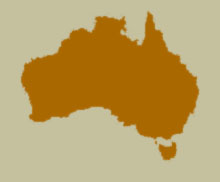Synonyms
Halmus hilli Slipinski and Giorgi, 2006: 278.
Diagnosis
At first sight H. hilli might be mistaken for H. chalybeus and H. cupripennis. Apart from genital characters the distinctly reticulate surface of pronotum and the non-metallic blackish dorsal surface may serve as characters to separate these two species.
Description
Length 3.1-3.5 mm. Male. Dorsal surface entirely blackish except for the head and anterior corners of pronotum, which are yellowish; venter yellowish brown. Body rounded, convex. Head micro reticulate between punctures; punctation about as large as eye facets, nearly 2 diameters apart. Eyes dorsally separated by less than 2 times the width of an eye; inner ocular margin slightly diverging apically. Antennomere 6 about 1.5 times longer than 5th and 7th. Clypeus distinctly emarginate medially with lateral extension markedly narrow. Terminal maxillary palpomere with sides nearly parallel to slightly securiform, moderately expanded toward apex; apex oblique with outer side about 2 times longer than inner; terminal labial palpomere somewhat conical; less than 2 times longer than basal width; shorter than the preceding segment. Pronotal surface sculptured as on head, the sculptures much weaker; punctation smaller than eye facets, shallow and sparse, approximately 2 to 3 diameters apart, obsolete on anterior angles; lateral borders slightly truncate; prosternum short, about as long as prosternal process widest width. Elytral surface polished between punctures; punctation stronger than on pronotum; about as large as to larger than eye facets, slightly deeper and more concentrated; lateral margin slightly reflexed. Abdomen with ventrite 6 conspicuous, shortly emarginate at apex; surface of ventrite 1 polished between postcoxal lines; postcoxal line not recurving apically, running parallel to posterior margin, almost reaching lateral margin.
Male
Tegmen relatively short, about 1/2 the abdomen length; penis guide symmetrical, slightly longer than parameres; parameres scarcely setose at apex, the setae short; strut visibly longer than tegmen; penis as fugured.
Female
Female externally identical to male but with head and pronotum only slightly lighter than elytra.
Variation
Unknown.
 Distribution and Biology
Distribution and Biology
Northern Territory.
Species References
Slipinski, S.A. 2007. Australian Ladybird Beetles (Coleoptera: Coccinellidae) their biology and classification. ABRS, Canberra. 286 pp.
Slipinski, A. and Giorgi, J.A. 2006. Revision of the Australian Coccinellidae (Coccinellidae). Part 6. Tribe Chilocorini. Annales Zoologici (Warszawa), 56(2): 265-304.
[ Top ]
